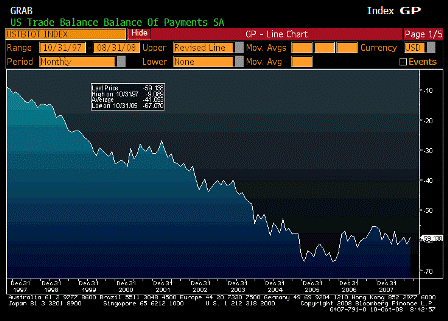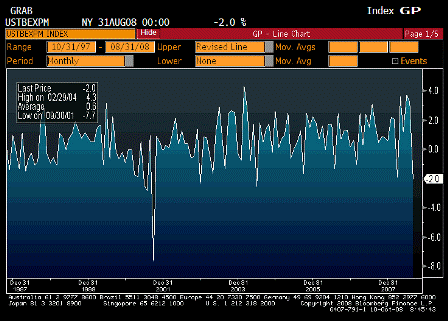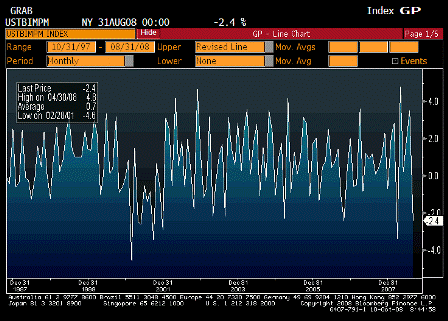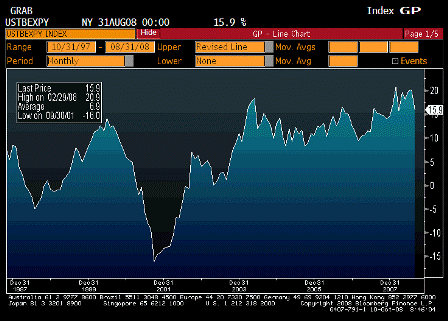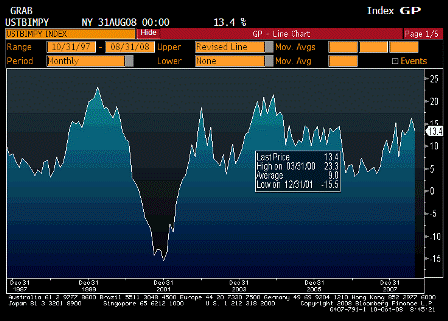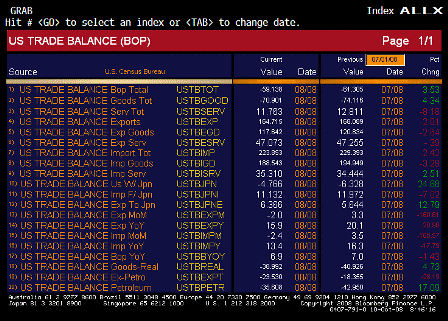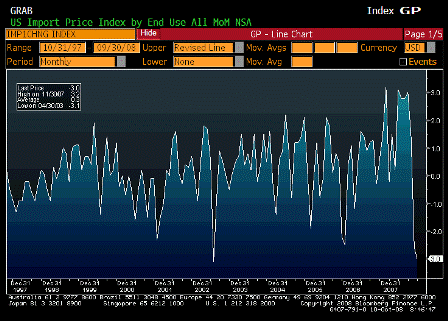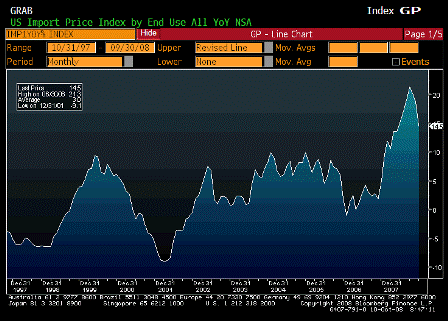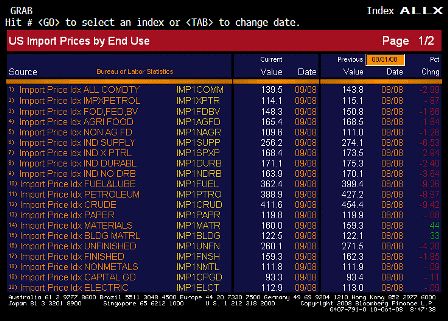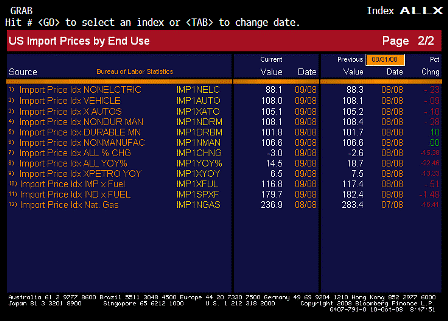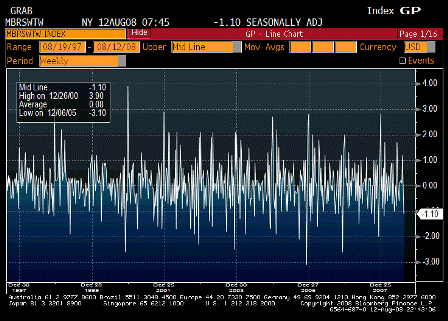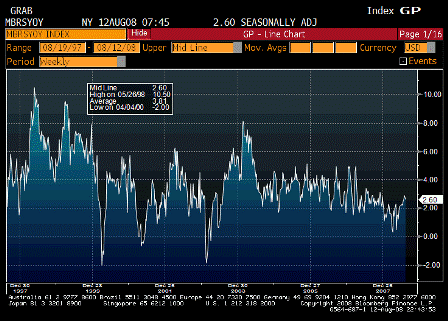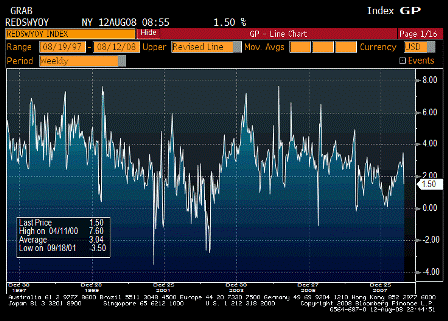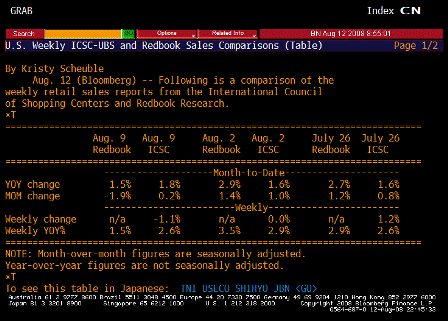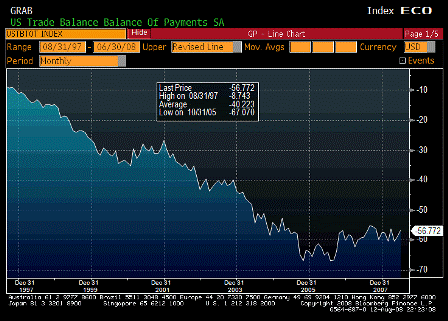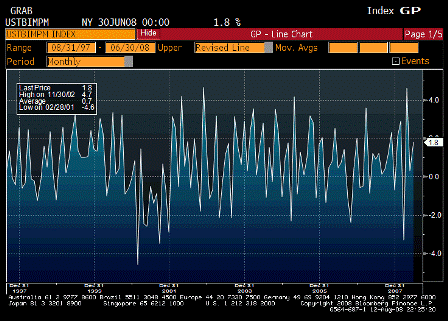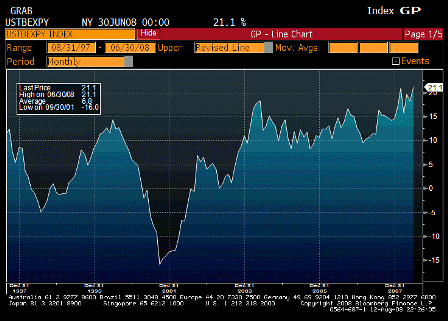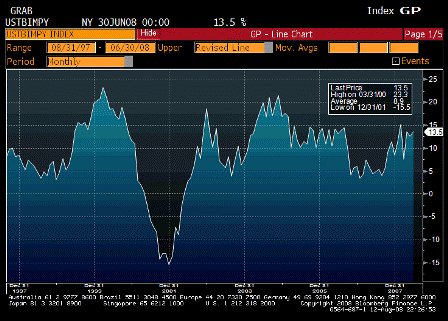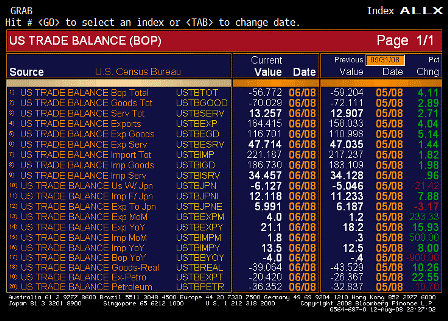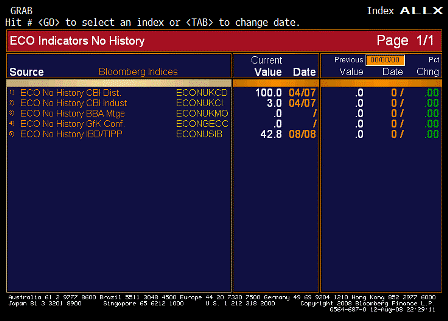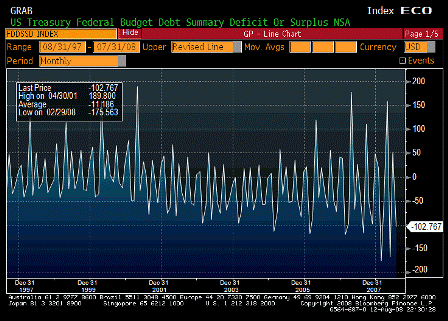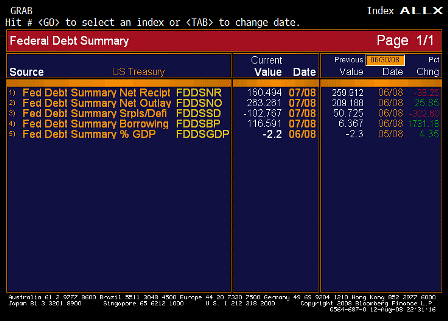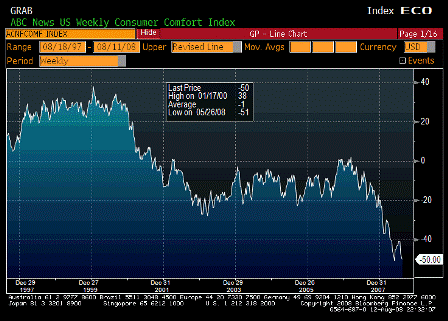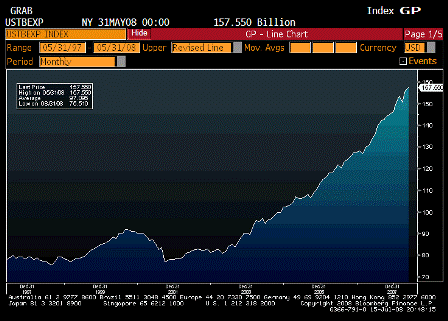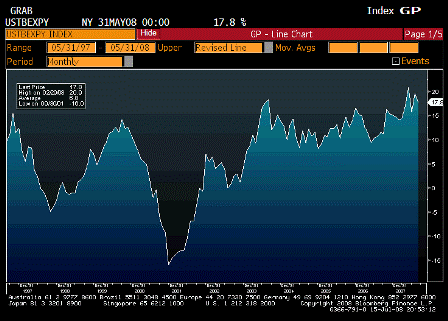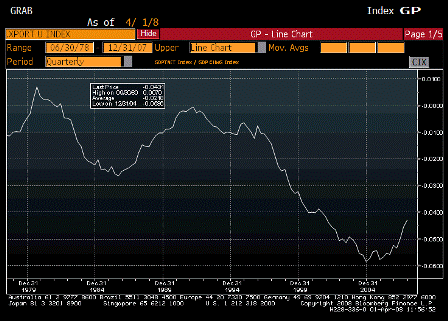Cutbacks now will further slow things:
China Extends Crackdown on Off-Balance-Sheet Loans
July 4 (Reuters) — China’s bank regulator has cracked down on off-balance-sheet lending by the country’s banks, sources told Reuters on Monday, its latest step to prevent over-zealous and risky lending from hurting its financial system.
China Banking Regulatory Commission (CBRC) has ordered banks to check all their deals in discounted commercial bills after discovering misconduct among some banks, two sources said.
Chinese banks have in the past year taken to off-balance-sheet lending, or keeping loans outside balance sheets after authorities clamped down on bank loans as part of their fight against inflation.
Last week the regulator tightened control on sales of wealth management products to ward off potential risks, and the regulator had earlier told banks to include all their loans extended via trust investment programs into their account books.
Discounted bills, an important source of financing for firms with no access to formal bank loans, accounted for about 2.5 percent of the 49.5 trillion yuan ($7.7 trillion) of total outstanding loans at the end of March, according to data from the Chinese central bank.
The regulator’s latest move comes after discovering that some rural credit cooperatives and banks in the central Henan province were issuing loans through discounted commercial bills and keeping them outside their loan books.
Under China’s banking laws, banks’ deals in discounted commercial bills should be reflected on their balance sheets.
Banks have been asked to investigate all deals linked to discounted commercial bills and submit their findings by Monday, sources said.
Under the review, banks were ordered to verify that bills issued were based on real transactions, and were ordered to track how extended credit was spent, they added.
Banks were also instructed to stop discounting bills that they issued to get funds for property and stock investments.
Analysts welcomed the move towards stringent regulation, which would also boost transparency.
“There is some concern that some borrowers were using these discounted bills as collateral for further borrowing,” said Mike Werner, a China banking analyst with Sanford Bernstein.
“So the idea that the CBRC is going to increase diligence covering this area of the market is not surprising.”
The regulator said bank branches found with serious misconduct would be barred from the discounted commercial bill market entirely, the sources added.
CBRC was not immediately available for comment when contacted by Reuters.
As China tightens policy and rein in lending to tame 34-month high inflation of 5.5 percent, many companies are struggling to get loans.
For these firms, discounted commercial bills are an important source of financing. They let companies bring bills or drafts to banks and request for money to be disbursed before they mature.

